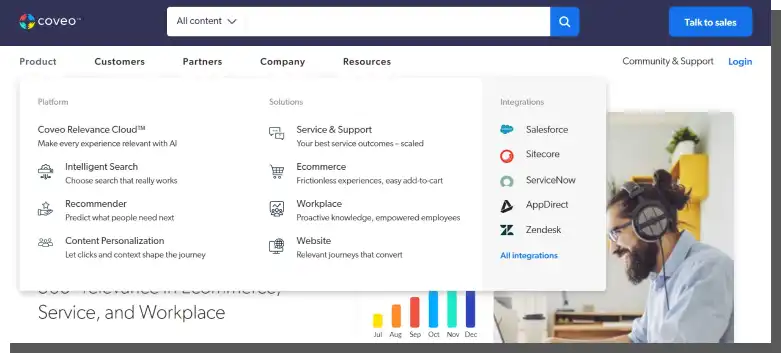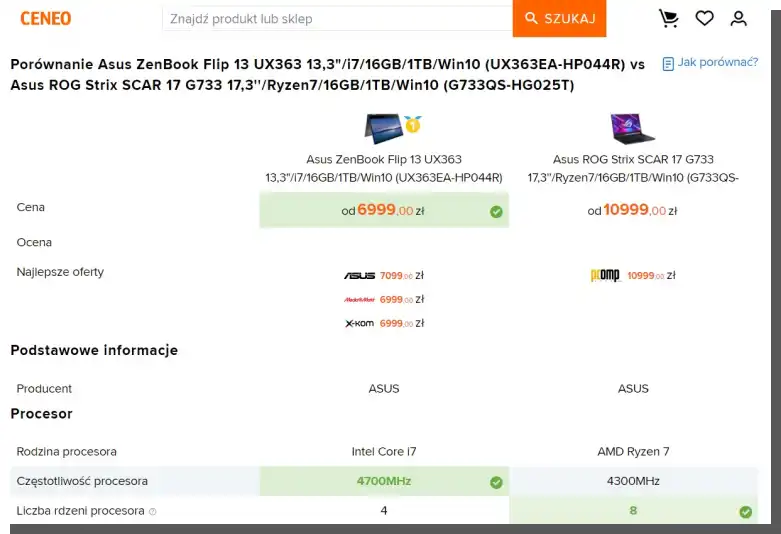In the era of the pandemic, this question may sound weird, but we will ask it nonetheless. Why do we buy online? Why has online shopping become so popular? Does online shopping have its own characteristics?
Oh, come on. These kinds of questions need to be asked. So, what's the big deal about buying online? Do you know? Today we'll look at this very problem. We invite you to read the article.
Who buys online, or what do we know about Polish shoppers?
Let's start with the reports. As always, at the beginning of the year, we have a flood of reports summarizing the Polish and global markets. The Gemius report is certainly worth a look. The 300 Research report, although modest in volume, is also interesting in several aspects. We should also add an equally informative report prepared by Interaktywnie.com to this collection.
What picture is emerging from them? As data from the Gemius report shows, the Polish E-Commerce customer is most often a person who is:
- A woman (51%)
- A resident of a city with a population of over 200,000
- A well-off person
- Between 28 and 35 years of age
- Has a university degree.
Polish online shoppers are definitely more likely to buy from Polish stores. According to data from the Interaktywnie.com report, they frequently buy the following:
- Clothing and clothing accessories
- Shoes
- Perfumes
- Books, records, and tickets.
What do we buy, and by what means?
The primary tool used for shopping online is still a laptop. However, users have increasingly started using smartphones to make online purchases. Mobile phones ranked second in the ranking of the most frequently used devices.

The popularity of mobile devices (M-Commerce) increases as the age of users decreases, which is not surprising. People between the ages of 18 and 24 are most likely to make purchases on mobile devices.
According to the European E-Commerce Report 2022, the most popular categories of goods bought online in Europe were:
- Any physical goods
- Clothes, shoes, and accessories
- Music, DVDs, and books.
While analyzing trends, it's worth taking a look at the "300 Research," from which you can find out that:
- E-Commerce grows all over the world and, on average, accounts for 17% of retail sales
- Pandemic supports E-Commerce and attracts new customers who state that they are willing to make another purchase
- Amazon is still one of the most popular E-Commerce platforms
- The most revolutionary trend that is expected to change the face of E-Commerce is personalization
- Artificial intelligence (AI) and customer data are expected to promote even more precise tailoring of the offer to the buyer's needs and improve retention.
Let's clarify. By personalization, the authors of the report primarily mean the analysis of the following:
- Previous behaviors in the online store
- Previous orders
- Payment methods
- Data that was collected from external sources (e.g., social media).

Alright, now you know, more or less, how a typical fan of E-Commerce behaves. You know what they buy and where. You still don't know why. And this question is essential from the marketing and commercial perspective as well as regarding User Experience. Cheap online shopping — a slogan accompanying many online purchases through the years— is definitely not the strongest bait anymore.
Why is it worth shopping online?
Let's start with Dave Chaffey's article "Digital Marketing Models: 6Cs of online customer motivation", in which he looks closely at the 6Cs of Online Customer Motivation. As the name suggests, the model is based on 6 key motivators. Namely:
- Content
- Customization
- Community — has an informative function and provides social proof
- Convenience — mainly related to the lack of time constraints and the possibility of a trouble-free return
- Cost Reduction — mainly related to the awareness of lower purchase costs
- Choice — refers to broader and easier access to products, vendors, and offers than in stationery stores.
Even if you buy online sporadically and have little insight into your own motivations, you still may feel that the Chaffey proposition is incomplete and needs to be supplemented with further reasons. Users buy online also because they can:
- Easier compare products with diverse benchmarks (e.g., price, delivery cost, parameters, order fulfillment time, warranties, and service)
- Pay with simple and flexible methods (payment systems, installment plans, deferred payments)
- Are not limited by restrictions or sanitary regimes that make it hard and risky to buy
- Make discreet, anonymous, and embarrassment-free purchases
- Don't have to stand in queues, avoid crowds, noise, and overstimulation
- Like to have access to more discounts, bonuses, and loyalty programs
- Gift something to somebody more easily.

What discourages us from shopping online?
You already know why online shopping is popular. However, every phenomenon has its good and bad sides. So what discourages users from buying in online stores? You can find a compelling answer in the article "Online Shopper Behavior: Influences of Online Shopping Decision." The authors list 4 reasons:
- Security
- Intangibility of online product
- Social contact
- Dissatisfaction with online shopping.
Although cyclically prepared analyses and reports clearly indicate that online shopping doesn't involve a greater risk of fraud, some people still see it as risky. Their concerns mainly relate to the use of personal and payment data.
The intangibility of products is obviously a problem.
Even the most detailed photos, descriptions, and prices won't replace direct contact with the product. For many people, it is a strong barrier.
The third argument against online shopping is also based on the need for experience, thrills, and contact. Shopping is often treated as entertainment, a way of spending time, and an excuse to maintain relationships and social contacts.
For many people exchanging links is a less attractive form of shopping.
The last argument comes from a negative experience. Although most online store customers are satisfied, negative situations can't be omitted. Failure to fulfill the terms of the contract, a product that doesn't match the description, and fraud are the most common reasons for limited trust in this form of purchasing goods.

Despite that, online purchases are becoming a daily occurrence for many consumers. Saving time and money are the most important motivators. Remember this.
Why exactly do we buy online?
Researchers from the Nielsen Norman Group also asked themselves this question. And they supplemented the above findings with additional elements and contexts. While reading the article "Why People Shop on the Web," you can learn fascinating things. The majority of conclusions overlap with those presented in this article, but there are a few that you should know about.
So, their study shows a hierarchy of importance for various purchasing reasons.
Low prices attract customers; however, they're only the third reason motivating them to buy.
Most respondents prefer the convenience, pleasure, and effectiveness of shopping online over lower prices.

In the purchasing process, customers often look for information on the product, costs, and detailed information about the vendor (if it's their first purchase in the store in question).
Information, attractive prices, and credibility must be available for the online store customer easily and clearly.
What's even more interesting the main reason for visiting a store is not a desire to place an order but obtain information about the product, vendor, and terms of the offer. For as many as 18% of respondents, such a reason is entertainment.
Only 5% of respondents visit online stores to make a purchase.
However, you should remember that people visit stationary stores also for various reasons.
Sales pressure that can also be felt in online stores (e.g., pop-ups) can be a strategy as effective as ineffective.
Mainly for the 95% of customers who want to obtain important information, familiarize themselves with the store, learn something about products, or encounter something new, and who don't necessarily feel like being pestered with aggressive ads.

Of course, the researchers from the NN Group wouldn't be themselves if they didn't present their research in the form of a report.
Matters related to the user experience are today the essence of optimization activities and are a significant factor that improves the competitiveness of online stores.
If you want to know how to deal with them, you should read their report.
To summarize. It's worth having these statistics in mind because they describe well the motivations, behaviors, needs, and concerns of online store customers. As you can see, the reasons for buying are not as obvious as they seem.
Online shopping. Summary
- The Polish E-Commerce customer is often a woman, a resident of a large city, a well-off person, someone between the ages of 28 and 35 or with a university degree.
- The most popular online purchases include physical goods, clothes, shoes, accessories, music, DVDs, and books.
- A laptop is a basic tool used for online shopping.
- Users increasingly use smartphones for online shopping. Secure online shopping is becoming increasingly associated with mobile phones. Similarly, online grocery shopping is becoming a standard in the age of the pandemic.
- Mobile devices are eagerly used for shopping by younger users.
- The pandemic attracts new customers who are willing to repeat purchases through online stores.
- The Polish E-Commerce market is growing rapidly compared to European standards.
- Artificial intelligence (AI) and customer data are expected to promote even more precise tailoring of the offer to the buyer's needs and improve retention.
- Personalization will mainly involve the analysis of previous behavior and orders and payment methods used in online stores.
- According to Dave Chaffey's model, 6 factors motivate users to make purchases online.
- Chaffey's model should be supplemented with another 7 reasons.
- Several important motivators far outweigh only 4 reasons that demotivate people from shopping online.
- According to research conducted by NN Group, low prices attract customers, but they are only the third motivator.
- Most respondents prefer the convenience, pleasure, and effectiveness of shopping online.
- The main reason for visiting a store is not to place an order but to obtain information about the product, vendor, and terms of the offer and also to see how safe it is to shop online.
- Only 5% of respondents visit online stores to make a purchase.






